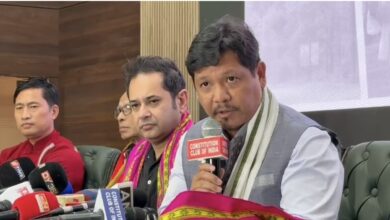Creativity in data science
The myth that data & creativity can't go together must be addressed by finding ways to integrate viable solutions in areas of public policy

 In recent times, the importance of data science in its application in public governance and policy-making has become increasingly relevant. In most countries, think tanks and civil society organisations have become aware of why data must feed into the recommendations provided to governments. They do face a challenge, though.
In recent times, the importance of data science in its application in public governance and policy-making has become increasingly relevant. In most countries, think tanks and civil society organisations have become aware of why data must feed into the recommendations provided to governments. They do face a challenge, though.
Often one does not get the data that is required but creativity can fill this gap. For example, in Bengaluru during the first wave of Covid-19, the use of data played an important role. Organisations like the Public Affairs Centre (PAC) used data effectively to identify areas where the pandemic was severe and not so severe. We used data to demarcate areas into red, green and yellow zones to help the government restrict movements and also to help people plan their travel outside their homes for daily chores.
In recent times, the Government of India and governments from all over the world have stressed the use of data, especially in the context of T20. Hence, using data creatively, we were able to ease some of the larger issues to tackle the pandemic.
Context
Often the use of data becomes skewed if the objectives are not defined well and clearly. For example, if one were to say that the objective of the research is to identify the key reasons for school dropouts then it becomes imperative to choose appropriate data points.
In other words, in the context of India in the research being done on Sustainable Development Goal 4, which is Quality Education, one of the reasons for education to be affected is due to school dropouts (children not attending schools or leaving schools). This is especially so in a lot of rural India. This finding cannot be just backed by saying that parents could not afford the fee, but other factors are no transport available, an unhygienic environment, lack of clean drinking water, etc.
To elaborate, the following steps need to be considered:
- Define data requirements
- Identify data sources
- If data is not available, find alternatives — proxy or surrogate data. Data should be scientific to analyse gaps and outliers.
Research projects must first have a clear idea of the policy problem they are seeking to inform, and the question they want to answer to help do so. From there they can identify the best available data and methodology to do so. ‘Best available’ data is the key here. What is feasible? Sometimes you might have to get creative, think outside the box, and look for alternative sources or methodologies to meet the knowledge need. But be careful: getting creative does not mean foregoing reliability and robustness of the data.
Stages of Using Data Creatively
Research projects have defined stages to follow that help in understanding, analysing and representing information in a manner that will be useful to an audience. In each of the stages, creativity plays an important part to ensure novelty, simplicity and most important ensuring complex data is conveyed/unpacked in a manner that can be understood by relevant stakeholders. To elaborate:
Stage 1: Planning
This stage involves generating ideas and gathering information to initiate a viable research project. It serves as a platform to prepare and generate ideas. It allows the teams to brainstorm and “think out of the box”.
Creativity is brought in by allowing one’s mind to wander, look at general issues in a new light and bring in new perspectives. Creativity also helps nurture different approaches and thoughts which in turn helps in building ideas, which may not have been foreseen.
Stage 2: Evolution
This stage helps one in taking two steps back and rest the idea. One can focus on other tasks/projects. Typically, in a research project putting away your analysis/writing for a couple of days is good. This becomes very important since when one revisits the same, a lot of thoughts, new perspectives and new readings add new information.
Similarly, creativity becomes part of this stage when ideas are visually seen and initiated. Content can be selected and communicated/showcased in the best way, based on the needs of the audience.
Stage 3: Clarification
This is also called the insight stage where ideas pop up and new insights appear. The wow factor appears in this stage where free and open-ended thoughts and ideas flow based on the material/information that was gathered.
Since answers to your research appear, the creativity juice also plays an important part, where you plan to present your information/data (especially numeric and statistical) needs to be used to convey complex ideas to ensure simple understanding. Your document starts generating Tables, Figures and Photographs to illustrate concepts more effectively.
Stage 4: Validation
In this stage, you validate the information and also consider alternative approaches. You consider and relook at information through comparison, validate it with evidences, and most importantly, reflect if your analysis matches your initial concept/idea.
Your creativity appears when you go back to the drawing board and try and connect the dots, relook at initial assumptions to ensure a viable research.
Stage 5: Confirmation
In this final stage, the actual creative process is built. One needs to now wear a tough think cap to see how best should information be presented, especially looking at the needs of the audience.
Like a research phase, the creativity phase also includes conceptualisation, designing, planning, analysing and publishing stage. The myth that data and creativity cannot go together needs to be addressed by finding ways to integrate viable solutions, especially in the areas of public policy. Creativity in data science can be seen in anything from innovative modelling, thinking up original ways to collect data, developing new tools and being able to visualise data processes.
Read other articles co-authored by Dr Annapoorna Ravichander:




